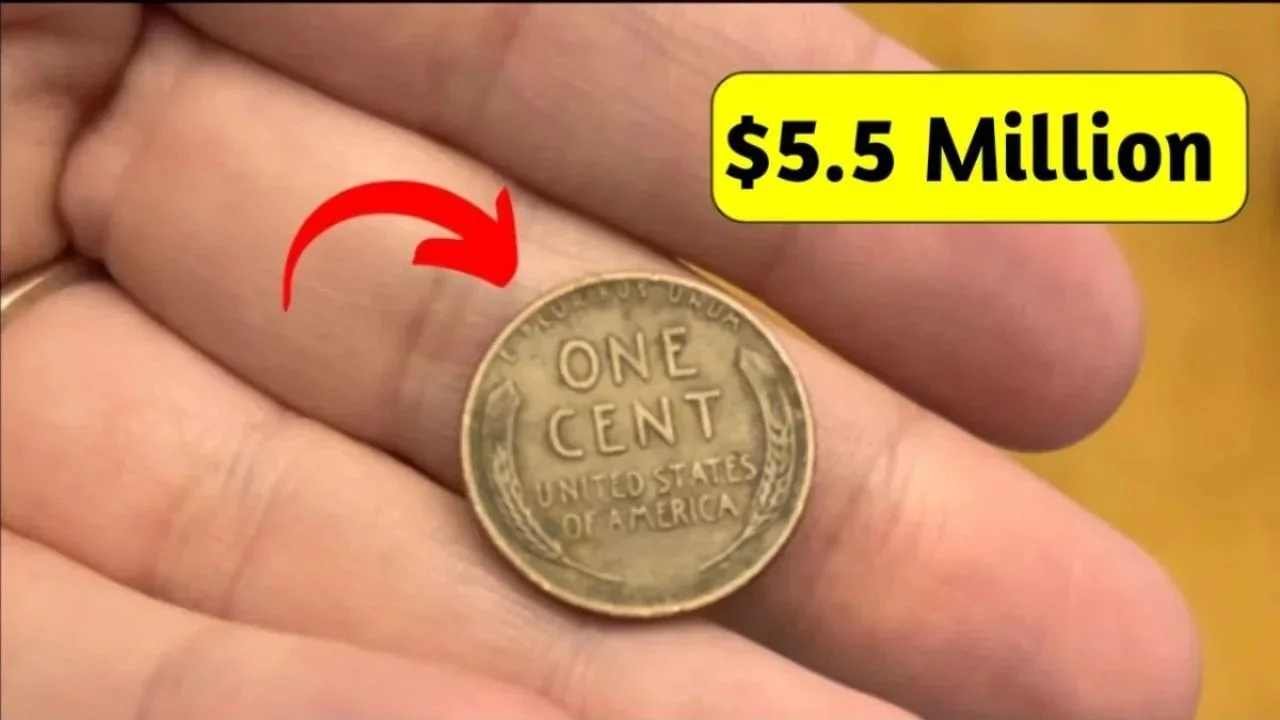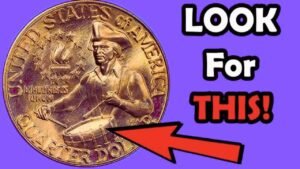Have you ever checked your loose change and wondered if a simple penny could be worth millions? The Lincoln Wheat Penny, a small coin from America’s past, has sparked a modern-day treasure hunt. Some claim a rare version of this penny could be valued at $5.5 million and might still be in circulation, hiding in coin jars, wallets, or even your pocket. But is this true, or just an exciting story? Let’s explore the fascinating history of the Lincoln Wheat Penny, why some are so valuable, and how you can join the hunt for this numismatic gem.
What Is the Lincoln Wheat Penny?
The Lincoln Wheat Penny is a one-cent coin minted by the U.S. Mint from 1909 to 1958. It was created to celebrate the 100th anniversary of President Abraham Lincoln’s birth. Designed by Victor David Brenner, it was the first U.S. coin to feature a real person instead of symbolic figures like Lady Liberty. The front (obverse) shows Lincoln’s profile, while the back (reverse) has two wheat stalks framing the words “ONE CENT,” giving it the nickname “Wheat Penny.”
Over its 50-year run, the U.S. Mint produced billions of these pennies in Philadelphia, Denver, and San Francisco. Most are worth just a few cents today, but certain rare versions, due to minting errors or low production, can fetch millions. The idea that one of these valuable coins could still be in circulation has coin collectors and everyday people buzzing with excitement.
Found in Grandpa’s Toolbox: The Kennedy Coin That’s Now Worth Over $50,000
Why Are Some Lincoln Wheat Pennies So Valuable?
Certain Lincoln Wheat Pennies are worth a fortune because of their rarity, historical significance, or mistakes made during production. Here’s why some of these pennies are so special:
Rarity
Some pennies were made in very small numbers, making them hard to find. For example, the 1909-S VDB penny, named after the designer’s initials (Victor David Brenner), had only 484,000 minted in San Francisco before the initials were removed due to public criticism. This low mintage makes it highly sought after, with top-quality examples selling for over $100,000.
Minting Errors
Mistakes during production created some of the most valuable pennies. The most famous is the 1943 bronze penny. During World War II, copper was needed for military supplies, so the U.S. Mint switched to zinc-coated steel for pennies in 1943. However, a few bronze blanks from 1942 were accidentally used, creating rare copper pennies. Only 15–20 of these are known to exist, and one sold for $1.7 million in 2010. Experts estimate a pristine 1943 bronze penny could be worth up to $5.5 million today.
Another error is the 1955 Doubled Die penny, where the date and words like “LIBERTY” appear doubled due to a misalignment during minting. About 20,000–24,000 of these were made, and they can sell for $1,000 in worn condition or over $100,000 in mint condition.
Historical Significance
These pennies were minted during major events like the Great Depression and World War II, making them a tangible link to history. The 1943 bronze penny, for example, reflects wartime resource conservation, adding to its allure.
The $5.5 Million Penny: Fact or Fiction?
The claim that a Lincoln Wheat Penny is worth $5.5 million usually points to the 1943 bronze penny. Its value comes from its extreme rarity (fewer than 20 exist) and historical importance. One sold for $1.7 million in 2010, and another fetched $1.35 million in 2021. With growing interest in rare coins, experts believe a top-quality 1943 bronze penny could reach $5.5 million or more at auction today.
However, claims of even higher values, like $21 million or $200 million, are often exaggerated for attention and lack evidence. While a $5.5 million penny is possible for a pristine 1943 bronze penny, it’s unlikely one is still in everyday circulation. Most known examples are in private collections or museums. Still, stories of people finding valuable pennies in change—like one discovered in a high school cafeteria in 1947 that sold for $204,000—keep the dream alive.
How to Spot a Valuable Lincoln Wheat Penny
Ready to start your treasure hunt? Here’s how to check if a penny in your pocket could be worth thousands or even millions:
Step 1: Check the Date and Mint Mark
Look at the year on the penny and the small letter (mint mark) below the date, if there is one. Key dates to watch for include:
- 1909-S VDB: Only 484,000 made, worth $100,000+ in top condition.
- 1914-D: Low mintage from Denver, valued at $10,000–$100,000.
- 1922 No D: A Denver penny missing its “D” mint mark, worth $5,000–$15,000.
- 1943 (Bronze): Extremely rare, potentially worth millions.
- 1955 Doubled Die: Look for doubled text, worth $1,000–$100,000.
- 1969-S Doubled Die: A rare error with blurry text, worth up to $1.7 million.
Mint marks are “D” for Denver, “S” for San Francisco, or none for Philadelphia. Coins from Denver or San Francisco are often more valuable.
Step 2: Test for a 1943 Bronze Penny
Since the 1943 bronze penny is the most famous, use these tests:
- Magnet Test: Steel pennies from 1943 stick to a magnet; bronze ones don’t.
- Weight Check: Bronze pennies weigh about 3.11 grams, while steel ones are about 2.7 grams.
- Color: Bronze pennies are copper-brown, not silvery like steel pennies.
Step 3: Look for Errors
Use a magnifying glass or jeweler’s loupe to check for doubled text or numbers, especially on 1955 or 1969-S pennies. Clear doubling on “LIBERTY” or the date is a sign of a valuable error coin.
Step 4: Check the Condition
Coin value depends on condition, graded on a 70-point scale by services like the Professional Coin Grading Service (PCGS) or Numismatic Guaranty Corporation (NGC). A worn (circulated) 1943 bronze penny might be worth $100,000, but a pristine (uncirculated) one could fetch millions. Never clean a coin, as it can ruin its value. Collectors prefer the natural patina that develops over time.
Where to Find a Rare Lincoln Wheat Penny
While it’s unlikely a $5.5 million penny is in your change, it’s not impossible. Here are places to look:
- Pocket Change: Check coins from cash registers or vending machines.
- Coin Jars: Old piggy banks or family heirlooms might hold treasures.
- Bank Rolls: Buy rolls of pennies from banks and inspect them.
- Flea Markets or Coin Shops: Estate sales or dealers might have rare coins.
- Inherited Collections: Old coin collections from relatives could contain gems.
Joining coin clubs or online forums can also help you learn more and connect with other collectors.
What to Do If You Find a Rare Penny
If you think you’ve found a valuable penny, follow these steps:
- Don’t Clean It: Cleaning can damage the coin and lower its value.
- Handle Carefully: Touch only the edges, ideally with cotton gloves, and store it in a non-PVC holder.
- Get It Authenticated: Take it to a reputable coin dealer or grading service like PCGS or NGC. Fakes are common, especially for 1943 bronze pennies.
- Sell Wisely: Use trusted auction houses like Heritage Auctions or Stack’s Bowers, or sell through reputable dealers. Online platforms like eBay can work, but only after professional grading to avoid scams.
The Thrill of the Hunt
The Lincoln Wheat Penny is more than just a coin—it’s a piece of American history. From its debut in 1909 to its role during World War II, it carries stories of a changing nation. The chance to find a rare penny worth thousands or millions adds excitement to everyday life. Even if you don’t find a $5.5 million penny, the hunt can spark a love for coin collecting and history.
Tips for New Collectors
- Learn More: Read books or visit websites like the American Numismatic Association for coin knowledge.
- Join a Community: Coin clubs or online forums offer tips and support.
- Stay Cautious: Be wary of fakes, especially with high-value coins like the 1943 bronze penny.
Conclusion
The idea of a $5.5 million Lincoln Wheat Penny hiding in your change is thrilling but comes with a dose of skepticism. The 1943 bronze penny, with its wartime error and extreme rarity, could indeed reach such a value in pristine condition, but claims of higher amounts are often exaggerated. While it’s unlikely one is still in circulation, the possibility keeps the treasure hunt alive. So, grab a magnifying glass, check your pennies, and dive into the exciting world of coin collecting. Who knows? Your next penny could be a life-changing treasure.




1 thought on “Lincoln Wheat Penny Valued at $5.5 Million: Fact or Treasure Hunt?”